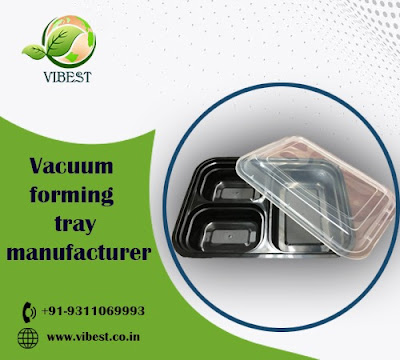Reliable Vacuum Forming Tray Manufacturer - Your Trusted Partner
In the intricate web of manufacturing processes, the term "vacuum forming tray manufacturer" might seem like a specialized niche, but their impact spans across diverse industries, playing a pivotal role in packaging, transportation, and organization. In this exploration, we will unravel the artistry and technical prowess behind the production of vacuum-formed trays, shedding light on the materials, processes, and the significance of these seemingly simple components in our daily lives.
The Essence of Vacuum Forming Tray Manufacturing
At its core, vacuum forming is a transformative process, turning flat plastic sheets into three-dimensional structures through the careful application of heat and vacuum pressure. This technique, often referred to as vacuum moulding, is particularly well-suited for crafting trays due to its ability to create intricate shapes efficiently. The process begins by heating a plastic sheet until it reaches a pliable state. It is then stretched over a mould, and a vacuum is employed to draw the material tightly against the contours of the mould.
Materials: The Building Blocks of Excellence
The choice of materials is a pivotal decision in the vacuum forming tray manufacturing process. Different plastics offer unique characteristics, and the selection depends on the specific requirements of the application. Polystyrene, known for its affordability and ease of forming, finds its place in disposable trays, providing a cost-effective solution for various industries.
Polyethylene, prized for its durability, becomes the
material of choice when trays are intended for repeated use, especially in
demanding industrial environments. The versatility of vacuum forming allows
manufacturers to work with a range of materials, each selected for its specific
attributes, ensuring that the trays meet the desired standards of functionality
and resilience.
In recent times, there has been a noticeable shift towards
eco-friendly materials in response to growing environmental concerns. Vacuum forming tray
manufacturer are increasingly adopting biodegradable plastics and
recycled materials, aligning their practices with a global commitment to
sustainability.
Precision in Design: moulds as the Architects
Central to the excellence of vacuum forming is the precision in design, and this is where moulds come into play. Moulds are the architectural blueprints that determine the final shape of the tray. With the advent of Computer Numerical Control (CNC) machining, the precision of mould creation has reached unprecedented levels. This technology allows for intricate designs and complex geometries, enabling manufacturers to cater to the evolving demands of their clients with remarkable accuracy.
The use of CNC machining not only enhances precision but
also contributes to efficiency. Rapid prototyping and iterative mould design
have become integral parts of the vacuum forming tray manufacturing process,
reducing lead times and providing manufacturers with the flexibility to adapt
to dynamic market needs.
Applications across Industries: Where Functionality Meets Form
The versatility of vacuum-formed trays is evident in their widespread applications across various industries. In the food sector, these trays serve as protective and visually appealing packaging for fresh produce, bakery items, and ready-to-eat meals. The trays not only preserve the quality of the contents during transportation but also act as a visual showcase on retail shelves.
In the healthcare industry, vacuum-formed trays play a
critical role in maintaining the integrity of medical instruments. Customized
trays are designed to secure delicate tools during sterilization and
transportation, adhering to stringent industry standards to ensure the safety
of medical equipment.
Electronics manufacturing also benefits from vacuum-formed
trays, which provide a secure housing for delicate components during shipping.
The trays can be tailored to fit the exact dimensions of electronic devices,
offering a protective and efficient packaging solution.
The Future of Vacuum Forming Tray Manufacturing: Embracing Innovation
As we look toward the future, vacuum forming tray manufacturers are at the forefront of embracing innovation. Technologies like 3D printing are emerging as valuable tools in the creation of moulds, enabling the production of highly intricate designs with unparalleled speed and precision. The integration of automation and robotics into the vacuum forming process is another avenue being explored, promising increased efficiency and reduced labour costs.
The industry's commitment to sustainability is also steering
the direction of future innovations. Manufacturers are actively exploring ways
to reduce waste, minimize energy consumption, and decrease the overall
environmental impact of vacuum forming tray production.
Conclusion
In conclusion, vacuum forming tray manufacturers are not merely producers; they are architects of functionality, designers of resilience, and pioneers in sustainability. The seemingly straightforward trays they craft are, in reality, the result of a delicate dance between art and science. As the industry continues to evolve, driven by innovation and a commitment to sustainability, the impact of vacuum forming on diverse manufacturing landscapes is set to grow, making these unassuming trays silent heroes in our daily lives.




Comments
Post a Comment